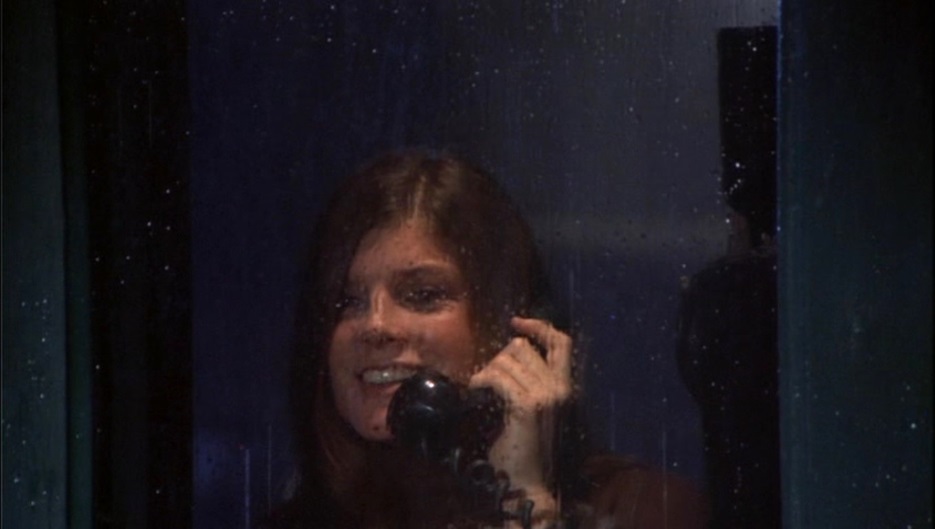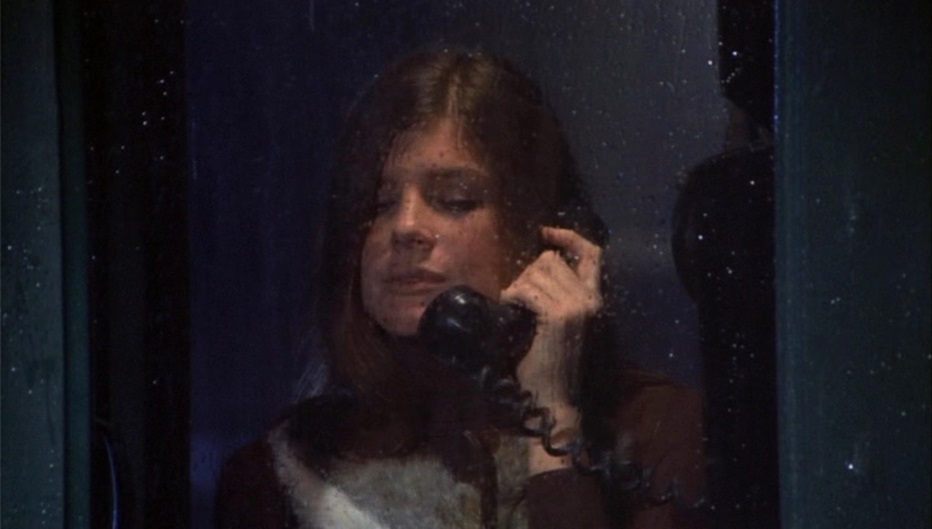"LOOK, I'M AT THE BEACH, AND I MADE A CONTACT" - WILLIAM FINLEY AS RAYMOND DUNWOODIE
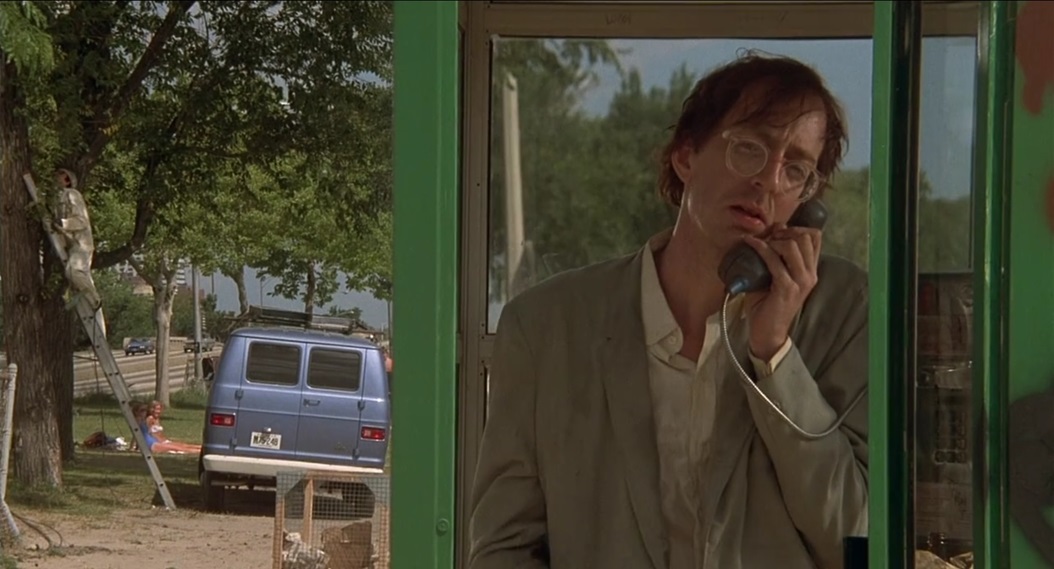
 Hello and welcome to the unofficial Brian De Palma website. Here is the latest news: |
|---|
E-mail
Geoffsongs@aol.com
-------------
Recent Headlines
a la Mod:
Listen to
Donaggio's full score
for Domino online
De Palma/Lehman
rapport at work
in Snakes
De Palma/Lehman
next novel is Terry
De Palma developing
Catch And Kill,
"a horror movie
based on real things
that have happened
in the news"
Supercut video
of De Palma's films
edited by Carl Rodrigue
Washington Post
review of Keesey book
-------------
Exclusive Passion
Interviews:
Brian De Palma
Karoline Herfurth
Leila Rozario
------------
------------
| « | May 2024 | » | ||||
| S | M | T | W | T | F | S |
| 1 | 2 | 3 | 4 | |||
| 5 | 6 | 7 | 8 | 9 | 10 | 11 |
| 12 | 13 | 14 | 15 | 16 | 17 | 18 |
| 19 | 20 | 21 | 22 | 23 | 24 | 25 |
| 26 | 27 | 28 | 29 | 30 | 31 | |
De Palma interviewed
in Paris 2002
De Palma discusses
The Black Dahlia 2006

Enthusiasms...
Alfred Hitchcock
The Master Of Suspense
Sergio Leone
and the Infield
Fly Rule
The Filmmaker Who
Came In From The Cold
Jim Emerson on
Greetings & Hi, Mom!
Scarface: Make Way
For The Bad Guy
Deborah Shelton
Official Web Site
Welcome to the
Offices of Death Records

MOHAN IS THE DIRECTOR OF THE VOYEURS, IMMACULATE, SAVE THE DATE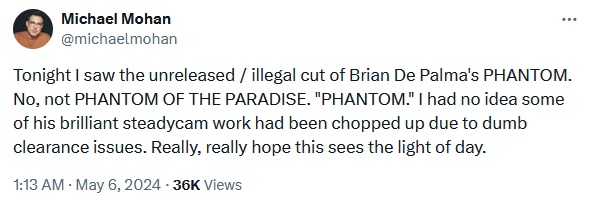


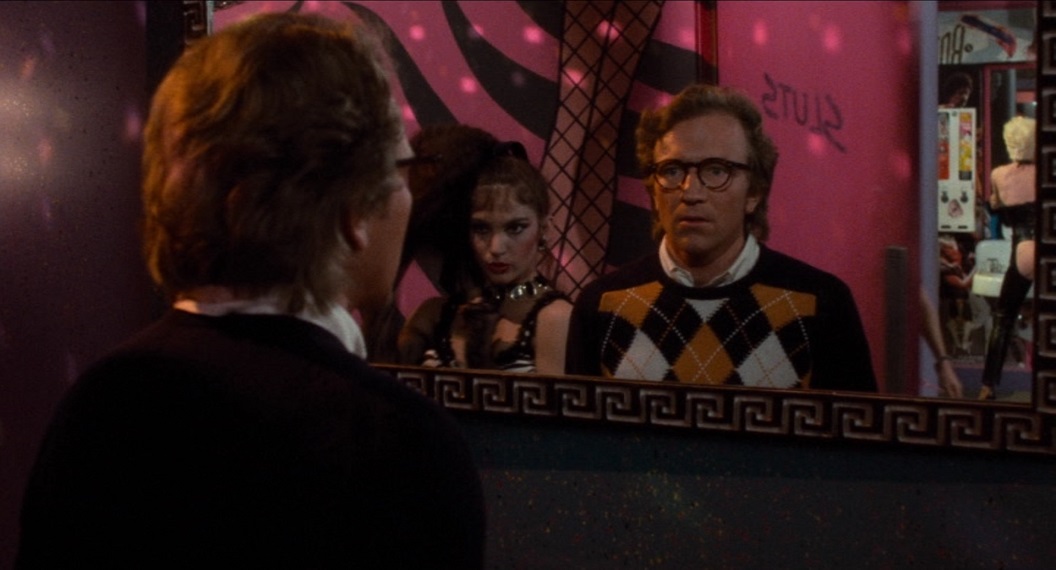
Watching this fever dream of a movie, it feels like Brian De Palma learned that he had six weeks left to live and decided to put all of his cinematic ideas in this film, whether or not they fit the story. It’s about an out-of-work actor who is housesitting at the Chemosphere and how he becomes more and more intrigued by a porn star he watches through a telescope. But following the plot is a fool’s errand – it’s the kind of film where you simply need to let the vibe wash over you in order to enjoy the onslaught of baffling maximalist creative decisions. From the sudden switch to rear projection mid-scene, to the abrupt musical number that happens toward the film’s climax; it’s crazy to think this is the blank check movie De Palma wanted to cash after the massive success of Scarface.Body Double also contains one of my favorite set pieces in all of De Palma’s filmography. In a moment of pure visual storytelling, we follow the main character tailing his object of desire, while a stalker is simultaneously tailing her at the same time. It’s the kind of sequence that can only exist in a movie; it would be so challenging to read in a novel and could never work in audio form. The way De Palma carefully lays out the geography and visual design of how his three chess pieces move across the board is remarkable.
I also just love that the killer’s weapon — a giant drill — is a direct homage to Slumber Party Massacre, one of the smartest horror movies ever made, and directed by a woman.
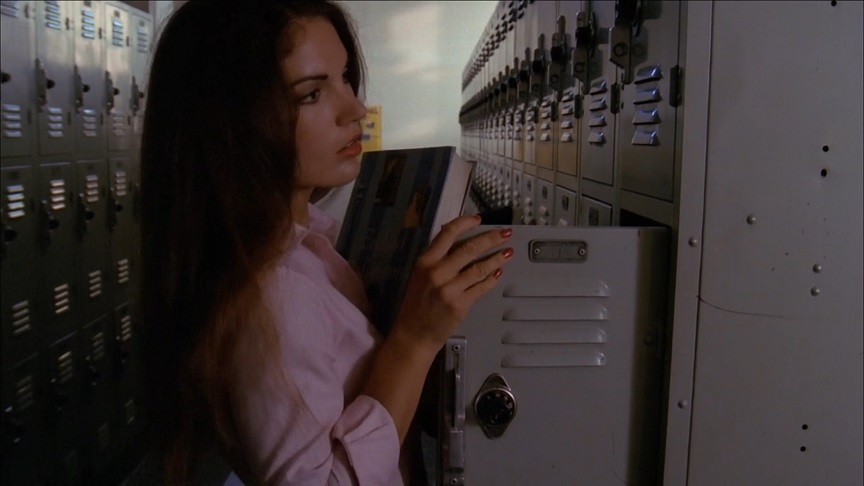
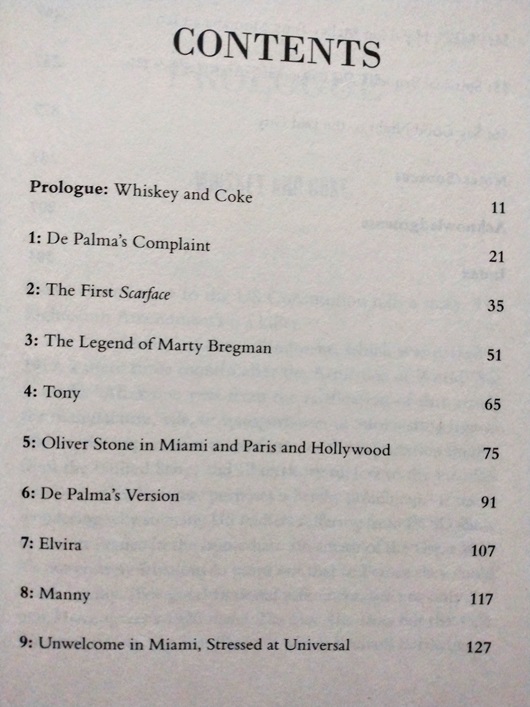

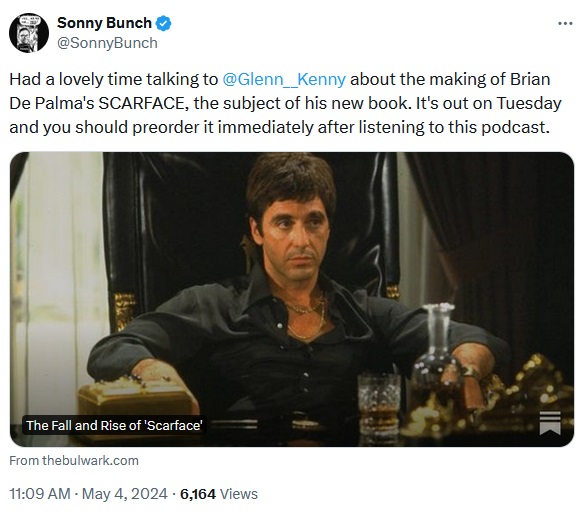
Sonny Bunch: I feel like one of the running motifs of your book is: Let’s get Brian De Palma behind a camera again. That would be fun. Maybe let him make one more movie. Somebody.Glenn Kenny: It’s a tricky situation. Because unlike the other directors he came up with, De Palma never formed a permanent production company of his own. He never aspired to be a producer. He was never a mogul. And unlike Scorsese and his other friends, he doesn’t have an archive of his stuff. He has been a director-for-hire, and kind of, the last few films that he’s made have acquired European backing and often European producers who are on the relatively shady side and interfere with the work. I’m not sure – I can’t speak for him, what his disposition is. I do know he would like to direct another film. It’s just that the circumstances haven’t loaned themselves to it. And he’s not in a position where he’s going to… you know, it’s complicated, from what I understand, is about all that I can say. But I would love for him to direct another film. He’s always thinking about things, and he’s living in East Hampton. And I know his great friends Jay Cocks, the screenwriter, and David Koepp, the screenwriter, visit him relatively frequently. They watch films together and talk films, so, you know, he’s still all about cinema. Yeah, I agree, I hope he gets to make another film, sooner than later.
I was a visitor on-set the day of the great Scarface disaster, when Pacino nearly killed himself by tripping at the wrong time and grabbing the wrong thing with which to steady himself.It was the final scene, where "Tony Montana" is killed. They were going to destroy the set by "gunfire" and take it up to the point when Tony falls out of the second story and ends up dead in the pool below. That really existed, in the house in Santa Barbara they were using for the exteriors. Tony would be chased through the house by the assassins, and in the end by blown away with a shotgun, as he fought them off with an AR-15 modified for full auto. Squibs were all over the set, and would be set off by a member of the SFX team offstage. It's important to note that Pacino's final mark had been made with a pair of 2x4s where "X marks the spot." This was going to be one long take and at the end the set would be destroyed.
So they start up, DePalma calls "action," and everything goes as you remember the scene watching in the theater.
Except, at the end, Pacino trips over the 2x4s and drops his gun. He grabs for it and ends up grabbing the red-hot barrel. He screams, drops it and starts to stagger back toward the window. Except there is no pool beyond it, only concrete floor. Nobody seems to know things have gone wrong other than Pacino and the actor who is to "blow him away."
At literally the last moment, before Pacino went out the window and ended up hittng the concrete floor 20 feet below, the "killer" actor grabbed his belt and pulled him back. Disaster was averted.
Pacino spent six weeks recovering from the burns. This gave the crew time to rebuild the set (god knows how much money this cost - the production accountant does too). Finally everyone is ready to go at it again. This time they use tape for "X marks the spot," and all goes well and we have all seen that final shootout and been amazed by it. (I forgot, during production, DP John Alonzo developed a way to wire the guns to the camera so they only fired when the aperture was open, so there is no rotoscoping in the entire movie).
Yeah, back in the days when makin' mo'om pitchas was fun.
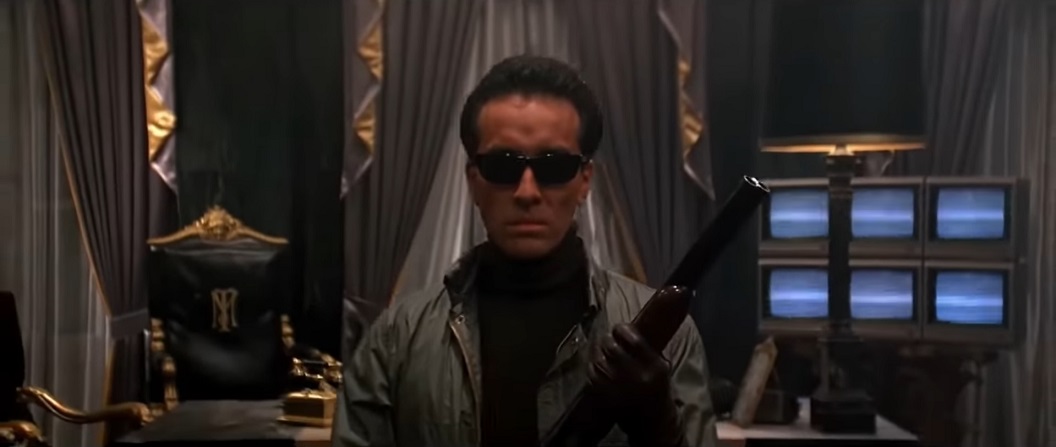

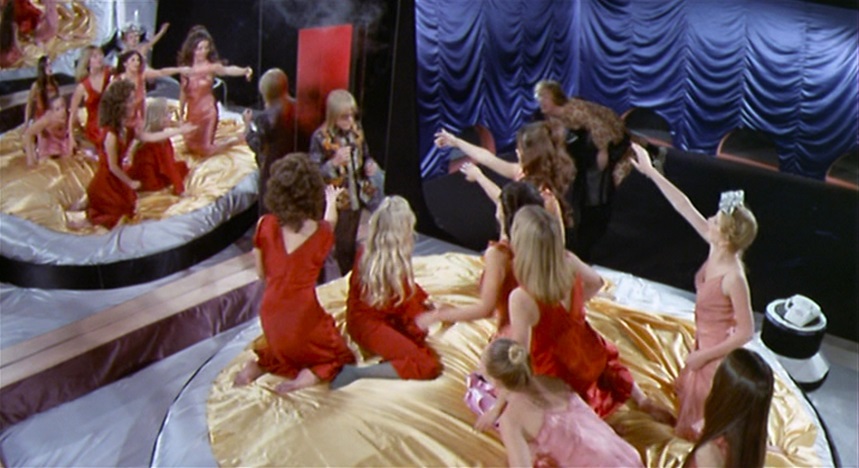
Meanwhile...
Momentarily distracted by the presence of Winslow Leach, the composer, Swan quickly comes up with an idea. "Telephone," he commands to no one in particular, turning and pointing toward the telephone that sits atop a bedside table behind him...






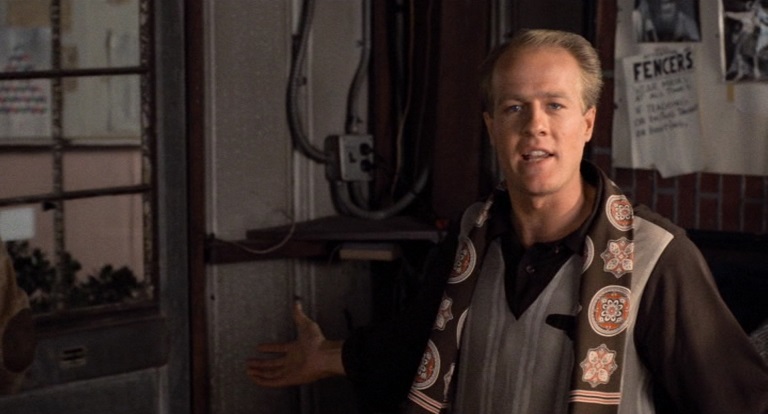
“It wasn’t a box office smash and it wasn’t promoted heavily or endorsed by critics at the time,” Henry said. “It was not enthusiastically endorsed by the studio. They kept the opening on the down low, you know what I mean? Now, that might be just my opinion. Go talk to the marketing budget people who might tell you something different. But I don’t think so. I think it was pretty understated in terms of the publicity because it was dealing with porn stars and looking at Hollywood in a sort of satirical way. It had all kinds of dark sort of things and Brian could be prickly when dealing with those studio types as well.”That “prickliness” from De Palma was rooted in the mainstream pressure within Hollywood to conform to a particular genre. De Palma, rather, built his auteurism upon commenting on the state of the film industry as a whole rather than succumbing to it.
“I think part of it is what we were just talking about a little bit ago is that there’s, you know, well, ‘How am I supposed to classify this? What pigeonhole can we put this in?'” Henry said. “‘Well, it’s funny but it’s kind of scary.’ ‘Well, it’s just a thriller.’ ‘Well, he said it is like ‘Rear Window.” Just on and on, the way people talk about Brian’s movies.”
According to Henry, “Body Double” has the ideal blend of the “definitive De Palma signature,” AKA it confused critics and studio marketing executives alike because it’s supposed to.
“I think that he had it before that but I think at that point in time, it’s like it becomes this sort of stamp along with the score,” Henry said of “Body Double” being distinctly De Palma-esque. “You can see like, you know, five seconds from across a large room and go, ‘Oh, that’s all pretty unusual.’ I mean, it’s unusual for, like, a singer’s voice or a painter’s paintings or anything.”
The tone of “Body Double” just might be what audience members are trying to unravel. While the film is no doubt a thriller, that’s not where the core tension comes from onscreen. Rather, it’s the toying with parody, power, and pleasure that De Palma deftly explores both with his camera work and script.
“I just think a lot of it is tongue in cheek,” Henry said. “A lot of scenes are humorous and poke fun at the movie business, certainly. It fires off in a lot of directions.”
Like that old Hollywood saying, films that criticize Hollywood don’t ever really find their appreciation in Hollywood. Don’t bite the hand, et cetera, et cetera. Henry finds “Body Double” “still funny” 40 years later, but also is aware that modern audiences may find some of the sequences a little more complex in today’s political climate.
“You watch it with your hand over your eyes,” Henry joked. “It was more fun than anything. It’ll be very interesting actually [to watch the discourse surrounding the re-release]. It was considered racy and dangerous for Brian to be taking this stuff on and doing it in the film. And now it’s racy and dangerous for a whole different reason. But maybe it’s the same reason, I don’t know.”
Henry continued, “I think some of the sense of humor might not play but some of the things that are funny to me, that are funny to Brian…I mean, he has that romantic spinning and 360 shot of the embrace which is really difficult to do and he does them really beautifully, with the score swelling. Those things make me laugh, you know. But then I don’t know if they make anybody else laugh. The same with the drilling scene. I just remember we’re talking about which bit we’re going to use and I’m saying to myself, ‘I know Brian’s going to go for that, which is huge,’ and that was the one he wanted. Then we’re shooting it in the blocking of it all. I had forgotten this, but it started with this crazy shot with using the drill horizontally, sort of going like as a sword going into her and everything. Then ultimately she’s on the ground and I said, ‘Well, I know what you want’ and I turned around with the drill and I sat down and started to swing it between my legs [like a penis]. And he said, ‘Yeah, that’ll be great.'”
From improvised phallic weaponry to cinematography Easter egg jokes, it makes sense why “Body Double” proved it could transcend its (or any) genre. “It’s sufficiently scary but it’s also very funny,” Henry said.
In fact, the only other director who can balance that tonal discrepancy between comedy and horror is James Gunn, according to Henry.
“I did James’ first movie, ‘Slither,’ with him, which has a similar sort of sensibility in terms of humor,” Henry said. “James and Brian are really my favorite people as directors.”
Like with De Palma, Henry continued to work with Gunn and appeared in the “Guardians of the Galaxy” trilogy.
As for “Body Double,” Henry couldn’t help but lament on the greatness of De Palma.
“I’m extremely proud to have done a lot of movies with Brian and I’m proud of being in this movie, even though it deals with some dicey and juicy areas,” Henry said. “I think he’s a masterful filmmaker and I think he is a stylist like very few directors are. It’s been an honor to be able to work with him.”
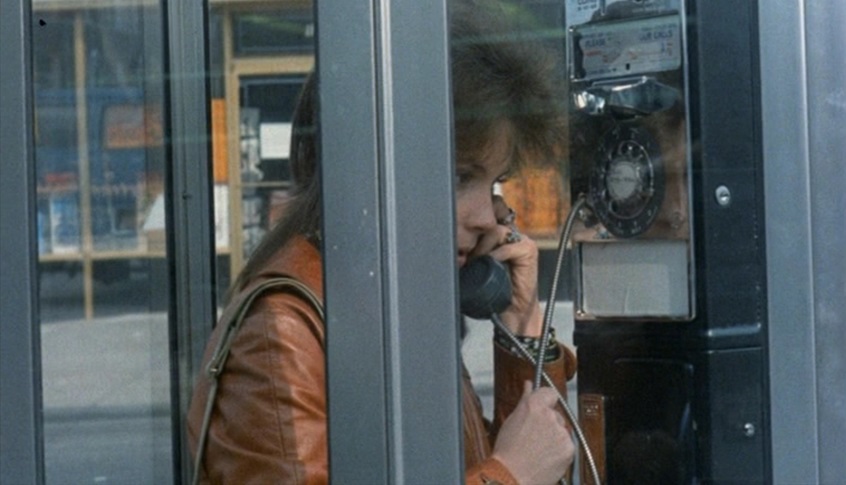
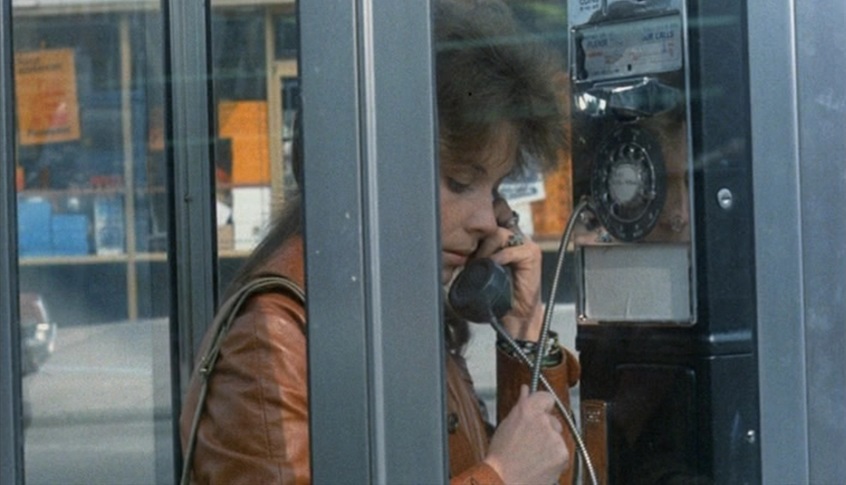
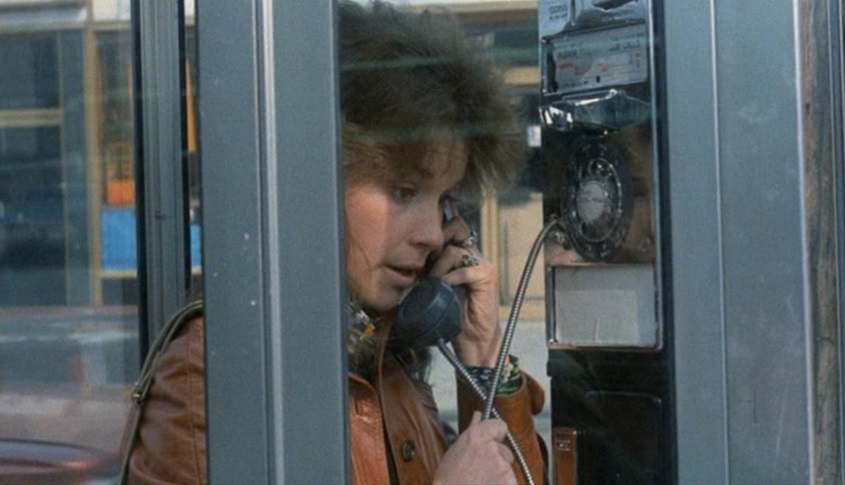

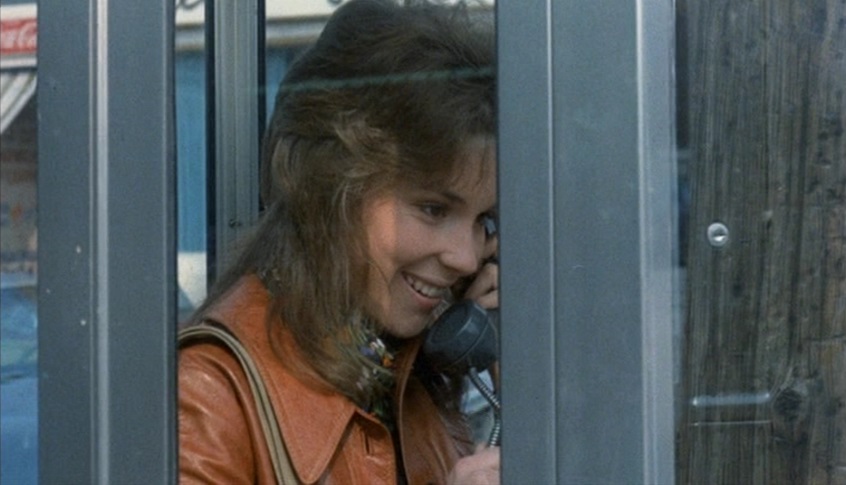
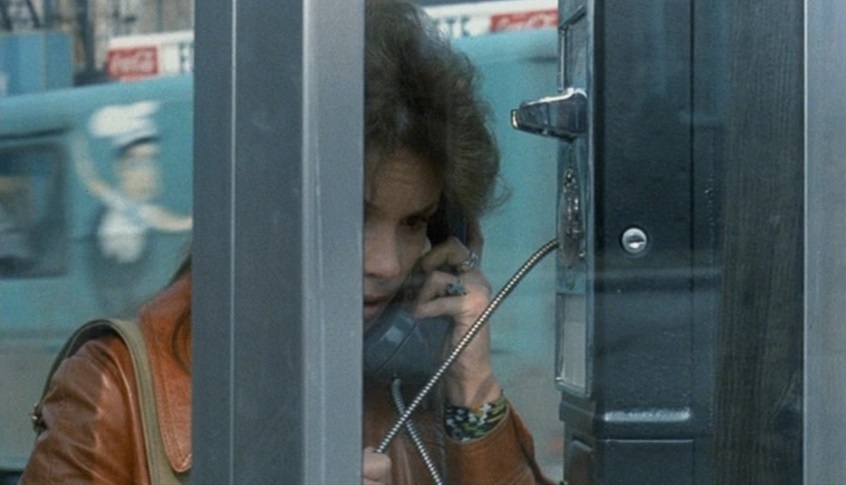
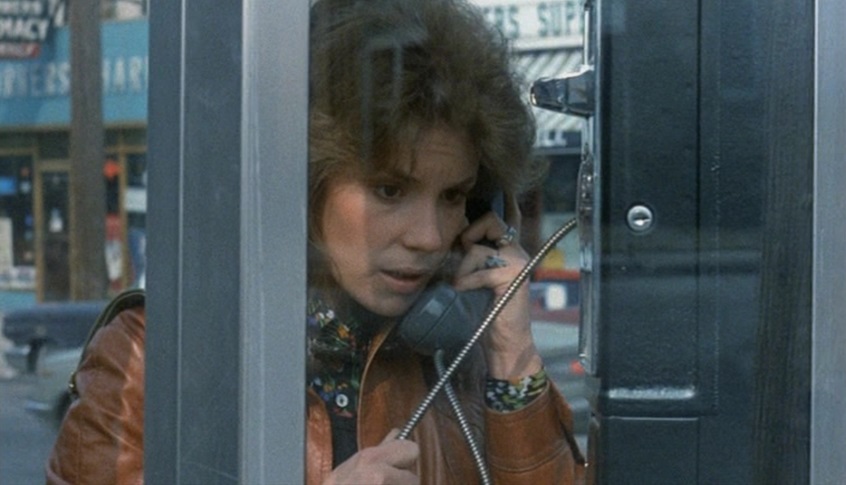
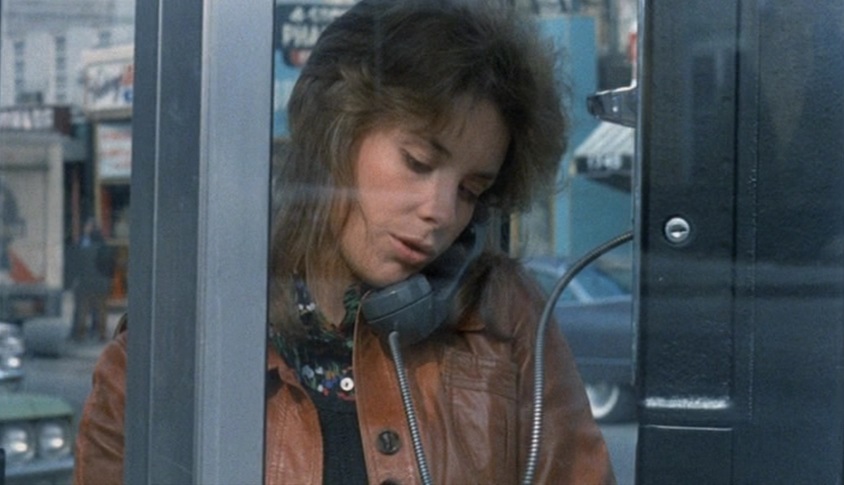
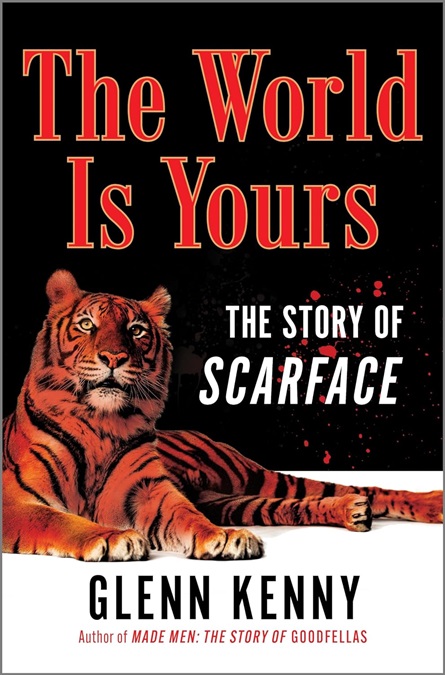
Screening of SCARFACE (1983), followed by a post-screening conversation with “The World is Yours: The Story of Scarface” writer Glenn Kenny and a book signing. Copies of the book will be available for pre-order and at the IFC Center concession stand.An unflinching confrontation of humanity’s dark side, Brian De Palma’s crime drama film SCARFACE gave rise to a cultural revolution upon its release in 1983. Its impact was unprecedented, making globe-spanning waves as a defining portrait of the gritty Miami street life. From Al Pacino’s masterful characterization of Tony Montana to the iconic “Say hello to my little friend,” SCARFACE maintains its reputation as an unwavering game changer in cult classic cinema.
With brand-new interviews and untold stories of the film’s production, longtime film critic Glenn Kenny takes us on an unparalleled journey through the making of American depictions of crime with the new book “The World Is Yours: The Story of Scarface.” The book highlights the influential characters and themes within SCARFACE, reflecting on how its storied legacy played such a major role in American culture, featuring behind-the-scenes story of the iconic film and new interviews with the cast and crew.
